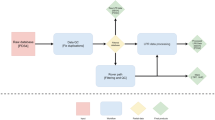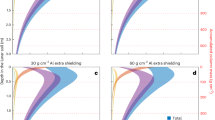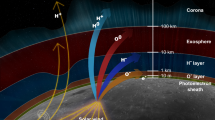Abstract
INFORMATION about the scattering properties of the Moon's surface has been deduced by Evans1 from the rapid fading of lunar radio echoes. His results were obtained by picturing the surface as an assembly of randomly spaced scatterers. Such a concept, however, does not take into consideration the distribution in depth of the scattering elements. An approach which does so is that adopted by Feinstein2, who used Huygens's principle to study the general problem of reflexion from a plane surface having random irregularities that are a function both of the space co-ordinates and of time. With minor modifications to take into account the curvature of the reflecting surface, Feinstein's results may be applied to lunar radio echoes.
This is a preview of subscription content, access via your institution
Access options
Subscribe to this journal
Receive 51 print issues and online access
$199.00 per year
only $3.90 per issue
Buy this article
- Purchase on SpringerLink
- Instant access to full article PDF
Prices may be subject to local taxes which are calculated during checkout
Similar content being viewed by others
References
Evans, J. V., Proc. Phys. Soc., B, 70, 1105 (1957).
Feinstein, J., Inst. Rad. Eng. Trans., AP, 2, 23 (1954).
Author information
Authors and Affiliations
Rights and permissions
About this article
Cite this article
DANIELS, F. Radar Determination of the Scattering Properties of the Moon. Nature 187, 399 (1960). https://doi.org/10.1038/187399a0
Issue date:
DOI: https://doi.org/10.1038/187399a0



